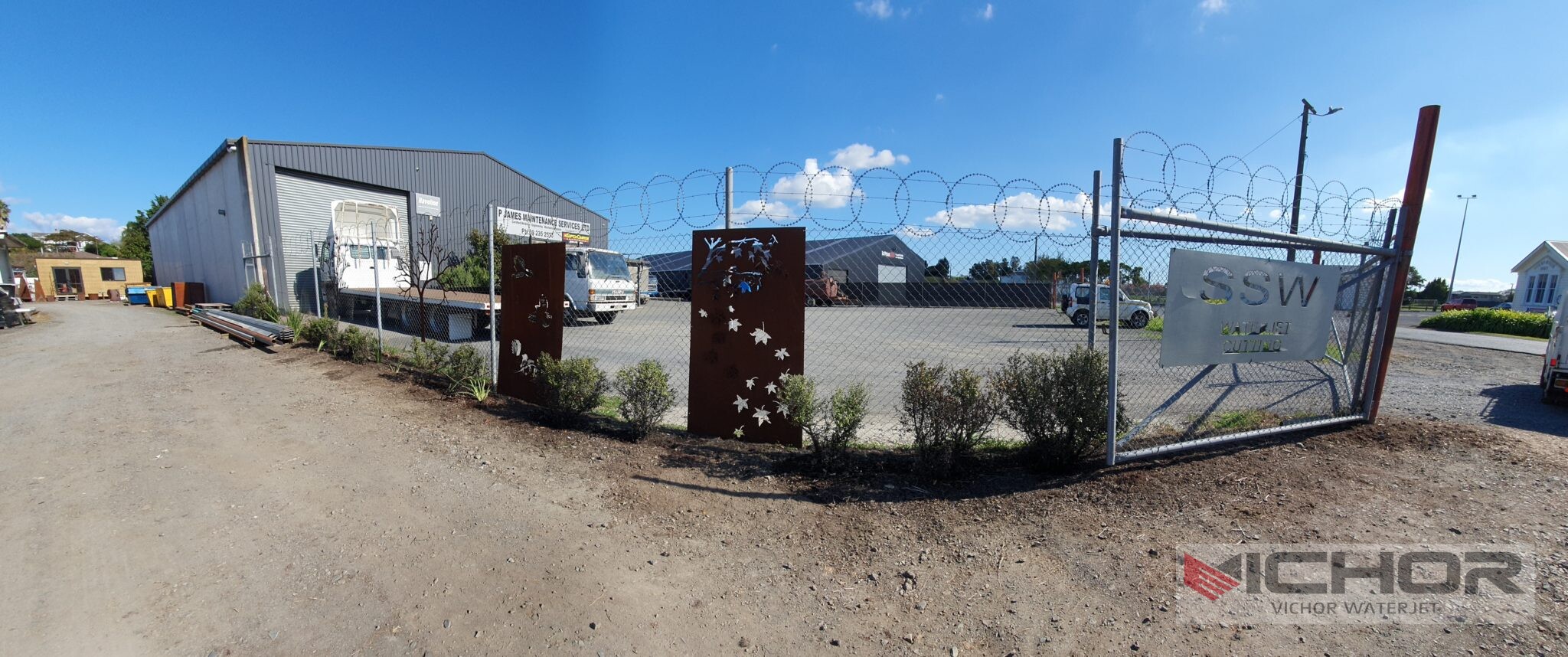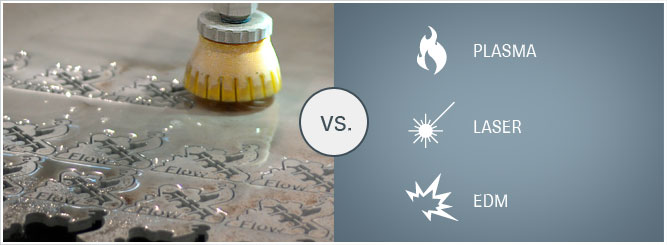
Water Jet vs Plasma Cutter: 7 Critical Differences You Must Know Before Buying (2025 Guide)
Choosing the right cutting technology for your metal fabrication, manufacturing, or workshop is a pivotal decision impacting productivity, quality, and your bottom line. The terms water jet plasma cutter often surface in searches, but this phrase actually points to two distinct, powerful technologies: Abrasive Waterjets and Plasma Cutters. Understanding their fundamental differences, strengths, and limitations is essential. This comprehensive guide dives deep into 7 critical aspects comparing water jet cutting and plasma cutting, empowering you to make the perfect choice for your specific needs and avoid costly mistakes.
1. Fundamental Cutting Principles: How Water Jets and Plasma Cutters Actually Work
The core technology behind each method is radically different, defining their capabilities:
Abrasive Waterjet Cutting:
Process: Utilizes an ultra-high-pressure pump (often generating 60,000 to 90,000+ PSI) to force a stream of water through a tiny orifice (typically diamond or sapphire), creating a supersonic pure water stream. For cutting hard materials, a precisely metered flow of fine garnet abrasive is entrained into this water stream within a mixing tube. The abrasive particles erode the material, enabling cutting.
Mechanism: Essentially a very fast, highly focused erosion process. It’s a cold-cutting method.
Tools: High-pressure pump, intensifier, orifice, mixing tube, abrasive metering system, abrasive (garnet), catcher tank.
Plasma Cutting:
Process: Uses a compressed gas (air, oxygen, nitrogen, argon/hydrogen mix) blown through a constricted nozzle at high speed. An electrical arc generated between an electrode (cathode) within the torch and the workpiece (anode) ionizes this gas, creating a superheated plasma channel (reaching temperatures of 20,000°F to 50,000°F). This plasma jet melts the material and the high-velocity gas blows the molten metal away, creating the cut.
Mechanism: Melting and blowing away material using extreme heat. It’s a thermal cutting process.
Tools: Plasma power source, torch, consumables (electrode, nozzle, swirl ring, shield cap), compressed gas supply.
Understanding these core principles is the first step in deciding between a water jet plasma cutter solution for your shop. Waterjet relies on mechanical erosion without heat, while plasma uses intense heat to melt.
2. Material Compatibility: What Can You Actually Cut?
This is often the deciding factor when evaluating a water jet plasma cutter purchase:
Abrasive Waterjet Cutting:
Strengths: Unparalleled versatility. Cuts virtually any material: Metals (steel, stainless, aluminum, titanium, brass, copper, tool steel – any thickness or hardness), Stone & Tile (granite, marble, quartz), Glass & Ceramics, Composites (carbon fiber, fiberglass, Kevlar – no delamination), Plastics & Rubber (acrylic, PVC, UHMW, gaskets – pure waterjet mode), Foam, Food, Exotics.
Limitations: Extremely thick, very hard metals can be slower than plasma. Some porous materials might absorb water.
Key Advantage: No Heat-Affected Zone (HAZ), preserving material properties (no hardening, warping, or micro-cracking). Ideal for heat-sensitive or brittle materials.
Plasma Cutting:
Strengths: Highly effective and fast on electrically conductive metals – primarily steel (mild steel), stainless steel, aluminum, brass, and copper. Excellent speed on mild steel up to several inches thick.
Limitations: ONLY cuts electrically conductive materials. Cannot cut stone, glass, ceramics, most plastics, composites, rubber, wood, etc. Creates a significant Heat-Affected Zone (HAZ), altering material properties near the cut edge (hardening, warping potential, micro-cracking risk). Dross (re-solidified molten metal) is common, especially on thicker cuts, requiring secondary cleanup. Not ideal for thin, heat-sensitive materials or materials prone to warping.
If your work involves non-conductive materials, heat-sensitive metals, or requires pristine material properties without HAZ, a water jet plasma cutter comparison heavily favors waterjet.
3. Cutting Precision, Edge Quality, and Kerf
The quality of the cut edge significantly impacts part functionality and finishing requirements:
Abrasive Waterjet Cutting:
Precision: Very high precision, capable of holding tight tolerances (±0.003″ to ±0.005″ is common, high-end systems better). Excellent for intricate contours and fine details.
Edge Quality: Produces a smooth, satin-like finish. Minimal burr (often negligible). No HAZ means no metallurgical changes. Taper is inherent but mitigated by advanced cutting heads (like Dynamic Waterjet XD) that tilt the nozzle to produce near-vertical edges on thick materials.
Kerf: Relatively narrow kerf (cut width), but wider than plasma. Kerf width is determined by orifice size, abrasive flow, and material thickness (typically 0.030″ to 0.050″ and up). Abrasive stream tends to spread slightly through depth.
Plasma Cutting:
Precision: Good precision, but generally less than high-end waterjet. Tolerances typically ±0.010″ to ±0.020″ for standard systems. High-definition plasma systems offer improved precision (±0.005″ or better) at a higher cost. Less ideal for extremely intricate details than waterjet.
Edge Quality: Edges are typically rougher than waterjet, especially with standard plasma. Characteristic “kerf lines” or striations are visible. Significant burr and dross (molten slag) are common, particularly on thicker cuts, requiring grinding or sanding. The HAZ alters the edge metallurgy. Beveled edges are typical.
Kerf: Narrower kerf than waterjet (especially on thinner materials), but wider than laser. Kerf width depends on amperage, gas, nozzle size, and cut speed (typically 0.060″ to over 0.180″ for thicker cuts).
For applications demanding the highest precision, smooth edges, minimal secondary finishing, and no HAZ, waterjet excels in the water jet plasma cutter debate.
4. Cutting Speed: Productivity Comparison
Speed is crucial for throughput and profitability:
Abrasive Waterjet Cutting:
Speed: Cutting speed is primarily determined by material type, thickness, and desired edge quality. Generally slower than plasma on thicker sections of mild steel (e.g., 1″ and above). Faster than plasma on very thick, hard metals (like titanium or thick tool steel) and non-conductive materials where plasma simply cannot cut. Speed is relatively constant regardless of material hardness. Piercing is slow.
Factors: Pump horsepower, abrasive quality/flow, cutting head technology, material abrasiveness.
Plasma Cutting:
Speed: Generally much faster than waterjet on conductive metals of moderate thickness (especially mild steel up to 1-2 inches). Speed decreases significantly as material thickness increases. High-definition plasma improves speed and quality on thinner gauges. Piercing is relatively fast.
Factors: Power source amperage, gas type/pressure, consumable condition, material type/thickness, cut quality setting.
Plasma often wins on raw speed for thicker mild steel fabrication. Waterjet provides consistent, albeit sometimes slower, speeds across a vastly wider range of materials and thicknesses, with superior edge quality.
5. Operating Costs and Consumables: The Long-Term Investment
Beyond the initial machine price, ongoing costs are critical:
Abrasive Waterjet Cutting:
Major Consumables: Garnet Abrasive (accounts for the single largest operational cost – tons are consumed), Orifice (diamond/sapphire – long life but expensive), Mixing Tubes (tungsten carbide – wear item), High-Pressure Seals/Valves (in pump).
Utilities: Significant electricity for the high-pressure pump, water (and filtration/waste disposal – garnet sludge is abrasive waste), compressed air.
Maintenance: Regular pump maintenance is essential. System complexity requires trained technicians. Abrasive handling systems need upkeep.
Cost Structure: High consumable cost (garnet), moderate energy, significant maintenance.
Plasma Cutting:
Major Consumables: Torch Consumables (Electrode, Nozzle, Swirl Ring, Shield Cap – wear rapidly, especially at high amperage/piercing), Compressed Gas (Air, O2, N2, H35 – cost depends on type and usage).
Utilities: Significant electricity for the power source, compressed air (if using air plasma).
Maintenance: Less complex mechanically than waterjet pumps. Focus is on torch maintenance and consumable replacement. Requires clean, dry air supply.
Cost Structure: High consumable cost (torch parts), moderate energy (gas/electricity), lower maintenance complexity than waterjet pump.
While plasma consumables wear quickly, the sheer volume and cost of garnet make waterjet operational costs generally higher per hour of cutting time, particularly on thick metals. However, waterjet’s versatility can offset this by eliminating the need for multiple machines.
6. Environmental Impact and Safety Considerations
Workshop environment and safety matter:
Abrasive Waterjet Cutting:
Environment: Generates sludge (water, garnet, and cut material particles) requiring containment and disposal/recycling. Noise levels from the high-pressure pump can be significant (requires enclosure/soundproofing). Minimal airborne dust (slurry is contained in tank). Uses large volumes of water.
Safety: Cold cutting process eliminates fire risk and harmful UV radiation. Primary hazards are the extremely high-pressure water (can cause severe injection injuries – strict safety protocols essential), noise, and handling abrasive materials (silicosis risk – requires dust control/respirators). Requires a large containment tank.
Plasma Cutting:
Environment: Produces intense UV radiation, requiring enclosure or operator PPE (helmet). Generates ozone (O3), nitrogen dioxide (NO2), and metal fumes (potentially hazardous – requires high-quality fume extraction/ventilation). Noise levels are high (loud hissing/popping). Creates hot sparks and spatter.
Safety: Fire hazard from sparks and hot slag (keep area clear of flammables). Severe eye damage risk from UV radiation (arc flash). Inhalation hazard from fumes and gases. Burn hazard from hot parts and spatter. Electrical safety is paramount.
Waterjet offers a distinct safety advantage with no heat, fire risk, or UV radiation. However, high-pressure water and abrasive handling require strict procedures. Plasma necessitates comprehensive fume extraction, UV protection, and fire safety measures.
7. Ideal Applications: Matching the Technology to the Job
Choosing between a water jet plasma cutter technology boils down to your primary work:
When Waterjet is the Superior Choice:
Cutting non-conductive materials (stone, glass, composites, plastics, rubber).
Cutting heat-sensitive metals (tempered tool steel, titanium alloys prone to HAZ issues).
Applications requiring no Heat-Affected Zone (HAZ) to preserve material strength, prevent warping, or avoid micro-cracking.
Jobs demanding exceptional edge quality with minimal secondary finishing.
Cutting very thick, hard metals where plasma speed drops significantly or edge quality is unacceptable.
Prototyping across diverse materials.
Food processing (pure waterjet).
When Plasma Cutting is the Superior Choice:
High-speed production cutting of mild steel (especially sheets and plates up to 1-2 inches thick).
Applications where edge quality/HAZ is less critical and secondary finishing (grinding) is acceptable/planned.
Field cutting and portability (smaller air plasma systems).
Scrapping and demolition.
Situations where lower initial machine investment is critical (though consider TCO).
Shops focused exclusively on carbon steel, aluminum, stainless fabrication with no need for non-metals.
The phrase “water jet plasma cutter” highlights two fundamentally different paths. There’s no single “best” technology; the optimal choice depends entirely on your specific materials, thicknesses, quality requirements, budget (both initial and operational), and shop environment.
Choose Abrasive Waterjet if you need: Ultimate material versatility, cold cutting with no HAZ, exceptional precision and edge quality on any material (especially thick/hard metals and non-conductives), and can manage the higher consumable costs (garnet) and maintenance complexity.
Choose Plasma Cutting if you primarily cut: Mild steel, stainless, or aluminum at moderate thicknesses (especially under 1-2 inches) and prioritize raw cutting speed over perfect edge quality, have a tighter initial budget, and implement robust fume extraction and safety protocols.
For many high-mix shops, having both technologies offers maximum flexibility. Carefully weigh the 7 critical differences outlined above against your specific needs. Consider running test cuts on sample materials with potential suppliers. Investing time in this water jet plasma cutter comparison ensures you select the technology that maximizes your productivity, quality, and profitability for years to come.
continue reading
Related Posts
- 1371 words6.9 min read
- 1449 words7.3 min read




